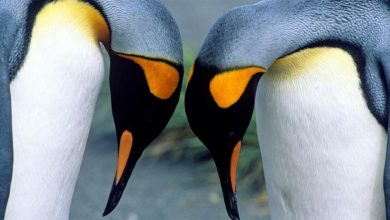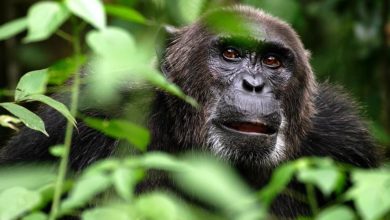The oldest known dinosaurs – Lesothosaurus
Lesothosaurus
Another (referring to the first part of the article) early dinosaur was the slightly later Lesothosaurus – the Lesotho lizard. In addition to the typical teeth, the herbivore Lesothosaurus had another feature very characteristic of bird-hipped (Ornithischia) dinosaurs. A new bone appears at the front of the jaw – usually in the form of a toothless beak. The toes are claws rather than hooves.
Based on discoveries in northeastern Argentina, and more recently in Madagascar and Poland (in the Opole region), where the remains of the most primitive reptilian herbivores, Prosauropods (Plateosaurids), were found, the Late Triassic was an important period for the emergence of dinosaurs. While their remains are not common, each find is of extraordinary value.
Already 225 million years ago, dinosaurs split into two main groups: lizard-hipped (Saurischia) and bird-hipped (Ornithischia). Apparently, they evolved from small reptiles that ran on two legs. Their evolution was rapid. Initially, the most significant improvements to their bodies were in the hind legs, enhancing their ability for fast yet efficient locomotion.

Lesothosaurus – characteristics
Analysis of Lesothosaurus teeth showed that the Lesothosaurus cut the food with its beak and could not chew it. Studies of tooth wear have shown much less tooth wear than would be expected from a herbivore that ate mostly hard vegetation in arid climates, and concluded that Lesothosaurus was probably an omnivore that ate predominantly small animals. Lesothosaurus was one of the earliest ornithischian dinosaurs. Lesothosaurus lived probably in groups. The Lesothosaurus did not have any special means of protection from predators; it hid from danger by running.
Lesothosaurus was originally considered an ornithopod. However, the work of Paul Sereno suggested that Lesothosaurus is actually one of the most primitive Ornithischians.
Features
The approximately 2-2.5 meter (6.6 – 8.2 ft) long herbivorous dinosaur had an iguana-like, short, flat and small skull, with pointed arrow-shaped teeth, short front legs (with five fingers), long hind legs and a long tail. The long hind legs indicate that Lesothosaurus could run very quickly. Lesothosaurus was a bipedal dinosaur.
Its remains were found in the Upper Elliot Formation. They are approximately 201 to 199 million years old.

Detailed data / dimensions (size)
Lesothosaurus
- Length: 2-2.5 m (6.6 – 8.2 ft)
- Height: 45 cm
- Weight: 10-20 kg (22-44 lb)
- Lived: 199-189 million years ago
- Era: Late Triassic, Early Jurassic
- Food: low vegetation, maybe small animals
- Occurrence: Africa (Lesotho, South Africa), South America (Venezuela)
Classification:
- Kingdom: Animalia
- Phylum: Chordata
- Clade: Dinosauria
- Order: †Ornithischia
- Clade: †Genasauria
- Genus: †Lesothosaurus
- Species: † Lesothosaurus diagnosticus
- Synonyms:
- Fabrosaurus australis Ginsburg, 1964
- Stormbergia dangershoeki Butler, 2005

Recommended
- The longest dinosaurs. Sauropods Top 10
- The heaviest dinosaurs – Top 10
- The longest predatory dinosaurs. Theropods Top 10
- The heaviest predatory dinosaurs Top 10
- The longest Ornithischians (Ornithischia) TOP 10
- The heaviest Ornithischians Top 10
- The largest raptors (dromaeosaurs) Top 10
- The heaviest Dromaeosaurids / dromaeosaurs – Top 10
- The longest Ankylosaurus Top 10
- The heaviest Ankylosaurus Top 10
- The longest ceratopsians
- The heaviest cerapsians
- The longest and largest ornithopods
- The heaviest ornithopods Top 10
- The longest Stegosaurians (Stegosauria) TOP 10
- The heaviest Stegosaurians (Stegosauria) Top 10
- The smallest sauropods Top 10
- The smallest dinosaurs Top 10
- The largest pterosaurs Top 10
- Dinosaurs
- Dinosaurs database
- Predatory dinosaurs
- Animals & dinosaurs records
- The fastest animals – Top 100
- The fastest birds – Top 10














